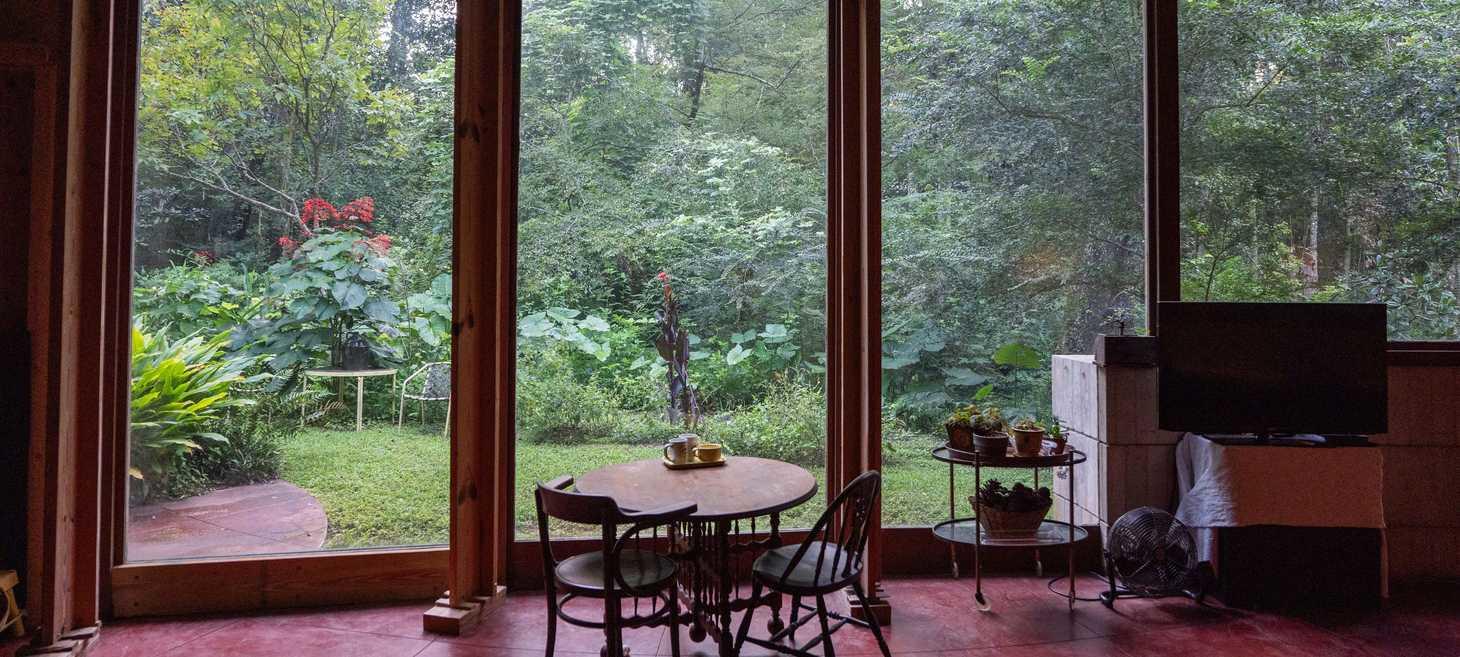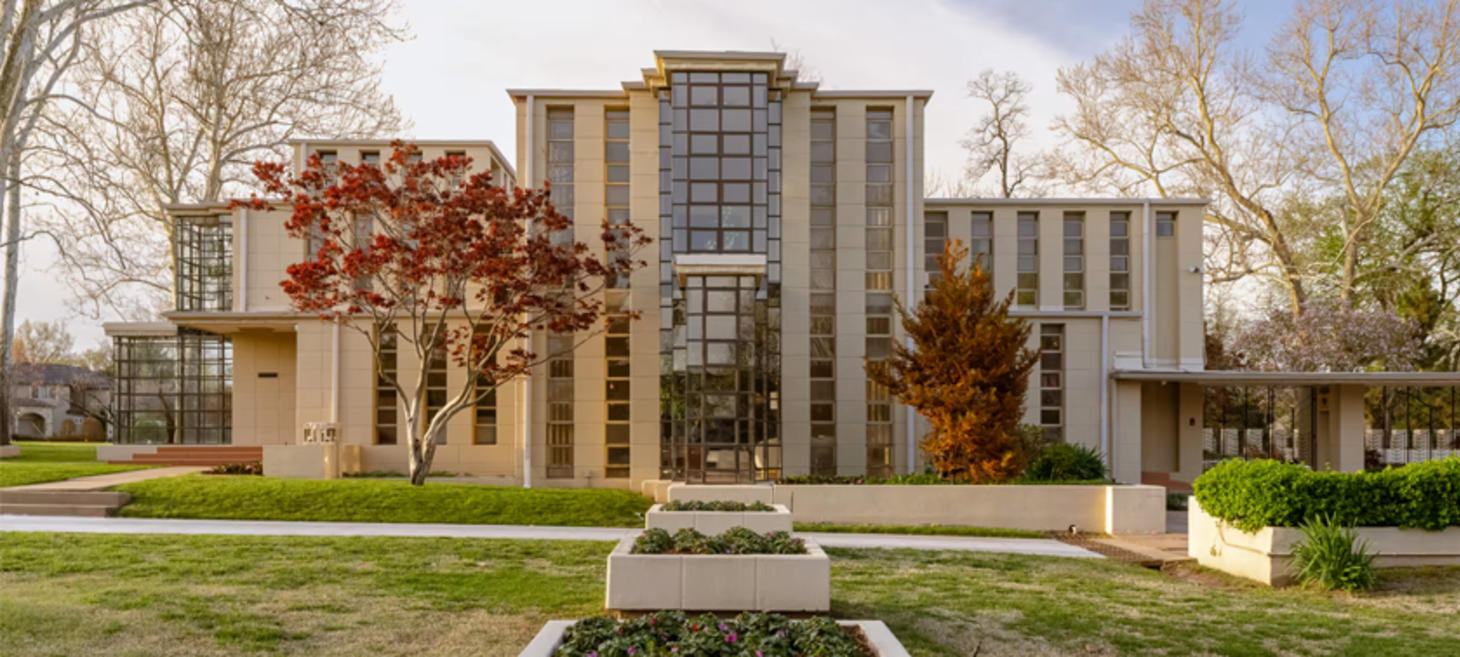The Headlines

Wright's Fountainhead Sold To Mississippi Museum Of Art
Fountainhead, a Frank Lloyd Wright–designed Usonian home in Jackson’s Woodland Hills, has been purchased by the Mississippi Museum of Art (MMA) following city approval of a zoning variance on Nov. 18 and neighborhood covenant changes.
The MMA finalized the purchase on Nov. 20 and plans to restore the 1948 architectural landmark so it can operate as a public museum for tours and events, joining other historic homes in Jackson’s residential areas. While the purchase price wasn’t officially disclosed, the museum is expected to spend about $2 million to buy the property and another $2 million on renovations, which are projected to take 12 months.
Fountainhead, tailored to its site using a unique parallelogram module, features Wright’s organic design principles, Heart Tidewater Red Cypress construction, and original Wright-designed furniture—all of which remain with the house.

Darwin Martin House Facing Decline In International Visitors
A historic landmark in Buffalo, New York, typically drawing architecture enthusiasts from around the world, is facing challenges as Canadian visitors have largely stopped making the trip.
Frank Lloyd Wright's Martin House in Buffalo's Parkside neighborhood has seen its international visitors drop from 20% of its tour program to just 3-5% in 2025, according to CEO Jessie Fisher.
"This is probably one of the most famous houses that Frank Lloyd Wright designed," Fisher said. "People who are really interested in architecture, who are interested in modern design, this is really a mecca. They come from all over the world to see this place."
The Martin House typically welcomes more than 40,000 visitors annually, with tours serving as the organization's primary source of revenue. But the sharp decline in international guests creates operational challenges.
"Right now, we're hovering somewhere between 3 and 5%, so it's really been devastating for us from an operational perspective," she said.
In conversations with Canadian members and visitors, they point to concerns about border crossings and political rhetoric as reasons for staying away.
The impact has forced difficult decisions about resource allocation at the historic site.
"It's been hard and we've had to make a lot of decisions about how to spend our resources, which are much more limited than they are in a typical year, because we simply don't have that Canadian revenue coming in and helping to support this beautiful place," she said.
According to Visit Buffalo, our region has continued to experience a decline in Canadian visitors, with bridge crossings from Canada into Western New York down approximately 15% through October compared to last year.
Fisher doesn't expect Canadian visitors to return anytime soon.
"We're really bracing ourselves for how do we not just get through 2025, but 2026 and 2027," Fisher said.
To address the revenue shortfall, Martin House has extended programming for the upcoming holidays and is encouraging donations to keep the grounds active and open.
"We really try to be as self-reliant as possible, but this is a year where, just due to circumstances beyond our control, we really do need extra support," she said.

See Inside Wright's "Spring House" In Florida
The only private residence in Florida designed by architect Frank Lloyd Wright went on the market over the summer after roughly seven decades.
The Spring House, built for Tallahassee's Lewis family in 1954, the namesake of the historic Lewis State Bank, had an asking price of $2.1 million back in August.
The house, just off of U.S. 27 north of the interstate, was imagined by Wright at the humble behest of the Clifton Lewis and George Lewis II. The couple made it home for them and their four children. Its unusual pod-shape curves represent one of Wright's last hemicycle designs, drawing Wright enthusiasts from near and far.
Spring House, a 2,040 square-feet home built on 10 acres in the woods, is unlike many of Wright’s grand works. Its three bedrooms are relatively small.
“One of Wright's design theories was that families should be close together and interact more,” said Byrd Mashburn, daughter of the Lewises. “We were together most of the time because the kitchen goes right into the dining room table. And the dining room table is basically in the living room.”
Visitors and admirers have descended onto the property for scores of community and private events. From fundraisers and weddings to camp outings, such as MoLab Inc.'s Camp Spark, which gave children an up-close lesson in architecture, and it was beloved.
Be sure to take a look at the video for a personal tour of this interesting home.

Fallingwater Undergoing Significant Preservation Work As It Approaches 90th Anniversary
Frank Lloyd Wright’s Fallingwater in Fayette County, Pennsylvania, is undergoing extensive preservation work as it approaches its 90th anniversary in 2026. As part of the World Heritage Preserved initiative, large-scale scaffolding has been installed for a major waterproofing and re-roofing project, which Fallingwater undertakes every 20–25 years.
Persistent water intrusion—caused by the home’s flat roofs, horizontal lines, and location over a waterfall—has led to significant leaks, prompting comprehensive repairs including new waterproofing systems, flashing replacement, steel conservation, and reinforced-concrete restoration. The project costs $7 million, roughly 40 times the home’s original 1930s construction budget, and is funded through state grants and private donations. The work is expected to finish by early spring, with scaffolding removed in April.

Wright's Westhope Sells For $3.56 Million
Westhope, a rare Frank Lloyd Wright home in Tulsa, Oklahoma, sold for $3.563 million. Built in 1929 for Wright’s cousin Richard Lloyd Jones, the 10,405-square-foot residence is notable as the architect’s only concrete “textile-block” house outside California and one of just three Wright homes in Oklahoma.
The seller, developer Stuart Price, bought the 1.5-acre property in 2021 for $2.5 million and undertook significant restoration, including a new roof and boiler, repaired floors, replaced windows, and a refreshed kitchen. After initially listing it for $7.95 million in 2023, Price reduced the price several times before the sale.
The home includes five bedrooms, extensive glasswork, built-in furniture, and Wright’s signature emphasis on light and linear design. The buyers, a young couple with Tulsa ties, plan to continue restoring and preserving the historic property.
About
This weekly Wright Society update is brought to you by Eric O'Malley with Bryan and Lisa Kelly. If you enjoy these free, curated updates—please forward our sign-up page and/or share on Social Media.
If you’d like to submit content to be featured here, please reach out by emailing us at mail[at]wrightsociety.com.
